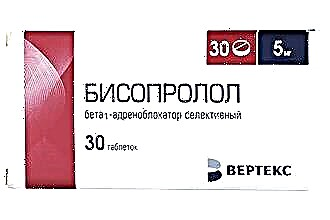Young parents, noticing that their newborn baby grunts his nose, are very worried - is he sick? What to do if a newborn grunts his nose, and how to help him? In this situation, mothers often hastily undertake attempts to "cure" grunting in all possible ways - instillation, warming, etc. are used.
 Often, parents even refuse daily walks with the baby, fearing that he already has a cold. Is it reasonable? In fact, the appearance of grunting sounds when breathing in a newborn is rarely indicative of illness - in most cases, this phenomenon is completely harmless. This is usually due to the peculiarities of the anatomy and physiology of children in the first months of life. Indeed, a healthy newborn, and often a 2-month-old baby, can grunt, sniff, groan - there is nothing wrong with that.
Often, parents even refuse daily walks with the baby, fearing that he already has a cold. Is it reasonable? In fact, the appearance of grunting sounds when breathing in a newborn is rarely indicative of illness - in most cases, this phenomenon is completely harmless. This is usually due to the peculiarities of the anatomy and physiology of children in the first months of life. Indeed, a healthy newborn, and often a 2-month-old baby, can grunt, sniff, groan - there is nothing wrong with that.
In this article, we will talk about why grunting sounds occur in newborns, and also consider cases when grunting is a symptom of the disease.
Causes
Why does a newborn grunt his nose? Any specific sounds coming from the nasopharynx, including grunting, occurs when the air flow on inhalation or exhalation collides with obstacles - mucus, dry crusts, etc. This brings discomfort to the child, but he still does not know how to get rid of mucus in the nose by blowing his nose, and all that remains for him is grunt and wheeze.
Features of anatomy
The nasal passages of infants are much narrower than those of adults, and the nasopharynx is more hydrated, so infants often suffer from nasal breathing difficulties, especially in the first year of life.
Feeding is often accompanied by grunting. In this case, it is possible for milk to enter the nasopharynx - this irritates the receptors, the baby tries to get rid of it and grunts. Also, milk can enter the nasopharynx when regurgitating, therefore, during and after feeding, it is advisable to keep the baby upright for some time, supporting the head straight.
Physiological rhinitis
If a newborn baby grunts his nose, but you do not observe any other disorders, most likely you are dealing with a physiological rhinitis. This phenomenon is associated with increased secretion of nasal mucus within one to two months after birth. Sometimes a physiological rhinitis is observed a little longer, up to 3-4 months of life. The fact is that the mucous membranes of the child did not function while he was in the womb, and now they need some time to adapt to new conditions.
Thus, if a child of 1 month grunts his nose, but otherwise he feels great, there is no need to treat him - this phenomenon will go away on its own.
Congestion of mucus in the nose
If you notice that your baby is wheezing on the nose, it is very likely that thick mucus has accumulated in his nasopharynx, making it difficult to breathe.
Infants spend almost all their time lying on their backs. In this position, the outflow of mucus from the nasopharynx is difficult, and it accumulates between the nose and throat. A similar problem worries many adults, who notice after waking up clots of mucus in the throat - this is muconasal mucus accumulated overnight.
In medicine, clinical cases of persistent runoff of nasal mucus down the pharynx are called postnasal drip syndrome.
The syndrome of postanasal leakage is a consequence of both the excessive formation of mucus and its thickening. So, liquid mucus drains freely, but viscous and thick can linger in the posterior parts of the nasopharynx for a long time, causing significant discomfort.
Thickening of mucus in the nasopharynx occurs as a result of:
- breathing dry or hot air;
- prolonged stay in a dusty, rarely ventilated room;
- insufficient mobility of the baby;
- lack of fluid in the body.
With the accumulation of viscous mucus in the posterior parts of the nasopharynx, the child sleeps restlessly, and in the morning he grunts and coughs.
How can you make sure your baby is not sick?
Grunting by itself should not be considered a sign of illness. It is another matter if grunting occurs simultaneously with other symptoms, such as:
- nasal congestion (the child is constantly with an open mouth, cannot suckle at the breast);
- copious discharge of snot;
- the newborn wheezes through the nose constantly, cannot sleep and eat normally;
- increased body temperature;
- cough;
- sneezing;
- indigestion;
- lethargy of the child, frequent crying, whims.
Grunting against the background of a general deterioration in health can be a sign of a viral infection, bacterial rhinitis or rhinopharyngitis, an allergic reaction, problems with milk digestion, etc.
To find out the exact reason, the child must be examined by a pediatrician.

How can I help my child?
To make breathing easier for a newborn, you need to set yourself 2 tasks:
- regularly clean the nose from accumulated crusts and mucus;
- improve the conditions surrounding the baby in such a way that the mucus in the nose does not thicken and is easily eliminated by itself.
Let's see how to do this.
We clean the nose
 To remove excess mucus from the baby's nose, you can use an aspirator or a small pear. This should be done with a runny nose, if it runs from the nose. If the baby is very sniffy, it means that dry crusts have accumulated in the nasal passages - they should be removed.
To remove excess mucus from the baby's nose, you can use an aspirator or a small pear. This should be done with a runny nose, if it runs from the nose. If the baby is very sniffy, it means that dry crusts have accumulated in the nasal passages - they should be removed.
The procedure for cleansing the nose of an infant is as follows:
- We'll need a saline solution. This can be boiled water with a small amount of kitchen salt (no more than a teaspoon per liter), or special nasal drops based on sea water for babies. The best option is a saline solution purchased from a pharmacy. It is sterile, harmless and quite affordable. Before use, the solution must be warmed up to body temperature by holding the bottle in hand.
- The child should lie on his back. You don't need to throw your head back.
- Into the child's nostrils, add 1-2 drops of the solution.
- Next, you need to take the child in your arms, hold it in an upright position, lightly massage the nose. At this time, droplets of the solution are distributed over the nasopharynx and soften the crusts.
- After that, you can clean the front of the nasal passages using cotton turundas moistened with a solution. You should not penetrate deep into the child's nose, and also wipe the inside of the nasal passages dry.
Cleaning the nose should be done regularly, but it should not be abused if the child is already breathing calmly.
We create comfortable conditions
Our time is such that children spend most of their time indoors, and short walks hardly meet the growing body's need for fresh air. That is why one of the most important tasks in caring for children is maintaining the cleanliness and humidity of the air in the nursery. Regular wet cleaning (3-4 times a week), daily airing, rejection of excess carpets, soft toys and other dust collectors will help with this. During the heating season, care should be taken to maintain normal humidity - it should be at least 50%. In such conditions, the work of the mucous membrane is normalized, and nothing interferes with the baby's breathing.



